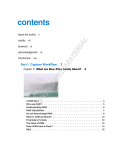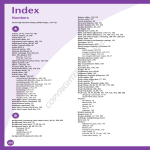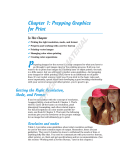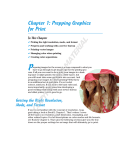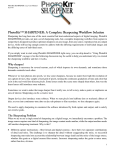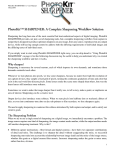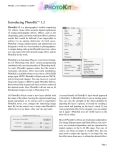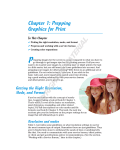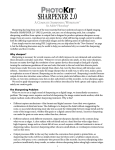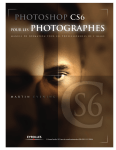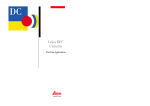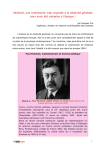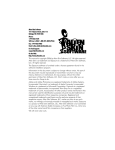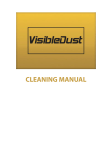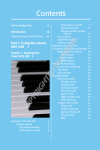Download Wiley Color Correction For Digital Photographers Only
Transcript
index NUMBERS CO PY RI TE RI GH TE D MA A Abbott, Berenice (photographer), 284 Absolute Colorimetric color conversion, 37, 38 ACE (Adobe Color Engine), 36–37 ACR-Calibrator script, 259–261 Actions palette group for, creating, 7 playing, 7–8 for resizing images, creating, 6–7 Adams, Ansel (photographer), 4, 340 adjustment layers. See also blend modes for converting color to grayscale, 288–295 for Hue/Saturation changes, 162 for increasing contrast, 103, 105 layer masks, 25, 291 for Levels dialog box, 244 for overexposure color correction, 151, 153, 154 overview, 24–25 Photo Filter, 318, 319 for selection masks, 162 for white balance correction, 147, 244 Adobe Bridge auto launching from Photoshop, 75–76 batch processing Camera Raw settings, 84–85 color settings adjustments in, 19 converting Camera Raw to DNG using, 53–55 setting Camera Raw preferences, 58–60 setting preferences for, 55–58 tooltips, 55 Adobe Camera Raw For Digital Photographers Only (Sheppard), 46 Adobe Color Engine (ACE), 36–37 Adobe Gamma calibration tool, 31–32 Adobe Open dialog box, 72–74 Adobe RGB (1998) color working profile, 17–18 aerial photography basic edits, 177–179 colorcasts common to, 177–178 haze and, 176, 179 problems common to other shots, 176 screen view and, 180 sharpening, 179–182 alpha channel creating with Calculations dialog box, 193 for high-key images, 302–305 Lens Blur filter with, 330, 334 antialiasing filter, moiré patterns from, 263 Apple CMM color engine, 37 Apple Color Sync color engine, 37 Apply Image command multiple duplicate layers technique with, 210–212 Screen mode with, 210–211, 214, 322 Arbus, Diane (photographer), 140 archiving files, format for, 52 artifacts, eliminating, 135–136 Assign Profile dialog box, 20–21 assuming a profile, 36, 39–40 Auto Color Corrections dialog box, 98 AL 8-bit images. See also JPEG format converting to 16-bit images, 114–115, 137 overview, 12 remapping the white point for, 113–114 1-bit line art, printing, 366 16-bit images converting 8-bit images to, 114–115, 137 overview, 12 12-bit images, 12 B batch processing, 84–85 Bicubic resampling mode, 8 Bicubic Sharper resampling mode, 9 Bicubic Smoother resampling mode, 9 Bilinear resampling mode, 8 bit depth. See also specific bit depths Camera Raw versus JPEG and, 48–49 for editing Camera Raw files, 60 overview, 12 Shadow/Highlight command and, 116 black point. See white and black points black-and-white photos. See also converting color to grayscale color mode for printing, 314 colorizing, 306–313 high-key darkroom techniques for, 302–305 negatives, copying, 271–273 1-bit line art, 366 printing, 314, 364–366, 376 shooting infrared photography, 297–298, 314 simulating an infrared shot, 298–301 Index blend modes. See also specific modes for eliminating artifacts, 136 for improving dynamic range, 13–14 Mason Pat Pending Mixed Mode Image Save, 210–212 overview, 24–25 Bresson-Cartier, Henri (photographer), 28 Bridge. See Adobe Bridge brightness adjustments. See also dynamic range basic curve shapes for, 107–113 in Camera Raw dialog box, 93–96 multiple duplicate layers technique for, 210–212 Screen mode for, 214, 322 Shadow/Highlight command limitations for, 117 for uneven exposure, 230, 232 White Point slider for, 218 C 382 cache for Camera Raw files, 59 Calculations dialog box, 193 calibrating Camera Raw color, 76–83 calibrating monitors for color profiles, 16 color viewing and, 4 embedding color profiles and, 26 hardware devices for, 30 Macintosh displays, 31 viewing compensation layers and, 357–360 Windows displays, 31–32 Calumet Photographic Web site, 236 camera movement, decreasing, 206 Camera Raw database files, 59, 88 Camera Raw dialog box in Adobe Bridge and Photoshop, 87 for black-and-white negative photocopies, 271–273 brightness adjustments in, 93–96 for color negative photocopies, 275–279 Curves pane, 272–273, 275 for duped slides, 268–270 histogram, 61–62, 66 processing images in, 70–72 turning off auto settings, 137 turning off sharpening in, 72, 87, 122 use before opening images in Photoshop, 70–72 white and black points in, 97 Camera Raw format Adobe Bridge with, 55–72 in Adobe Open dialog box, 72–74 applying last settings to selected images, 86 bit depth and, 12 calibrations for copy work, 259–262 changing settings for, 85–86 clearing settings for an image, 72 color calibration, 76–83 conversion tool, 48 defined, 46 digital cameras and, 46 DNG standard for, 52–55, 87 further information, 46 histogram for, 61–69 JPEG versus, 48–52 opening in Photoshop CS2, 72–76 overview, 46–48 removing settings, 85–86 resolution and, 6 setting preferences for, 58–60 settings for batch processing, 84–85 speeding work with, 50, 52 Camera Raw Preferences dialog box, 58–60 cameras. See digital cameras Cameron, Julia Margaret (photographer), 46 Canvas Size dialog box, 369 Capa, Robert (photographer), 250 Channel Mixer dialog box, 227, 288–292 chromatic aberrations, correcting, 328–329 chromatic noise, 222. See also noise Chromoholics Web site, 259 clipping in Camera Raw histogram, 61, 93 to decrease noise, 219–220 Shadow/Highlight command for adjusting, 121 by Variations command, 145 CMYK color mode assuming a profile, 36, 39–40 CMYK inks and, 376 color gamut and, 10–11, 26, 43 embedding output profiles and, 36 offset press printing and, 367 overview, 10–11 printers and, 26 soft-proofing and, 40–41 Color Balance command, 144 color channels for Camera Raw format, 64–66 in Curves dialog box, 145 duplicating to create a working channel, 131 Enhance Per Channel Contrast option, 219 gray levels in, 12 in Grayscale color mode, 11 in Lab color mode, 11 moiré pattern correction using, 264–266 in RGB color mode, 10, 64–66 white balance correction using, 147–148 Color Checker chart (GretagMacbeth), 259 color crossover correction, 360–364 color engines, 36–37 color gamut bit depth and, 12 RGB versus CMYK and, 10–11, 26, 43 soft-proofing for out-of-gamut colors, 40 sRGB color working profile and, 18 color matching, photocopying art prints and, 254 contrast adjustment layer for, 103–105 aerial photography settings, 178–179 basic curve shapes for, 108–110, 111–113 for color negative photocopies, adjusting, 277 correction mask for copy lighting, 256–258 Enhance Per Channel Contrast option, 219 increasing with Curves, 100–101, 104–105, 162 Luminosity blend mode for increasing, 104–105 noise from big enhancements, 176 setting white and black points for, 97–99 Shadow/Highlight command for adjusting, 121 uneven exposure and, 230, 232 Convert to Profile dialog box, 21, 33–34, 36–38, 353 converting color to grayscale destructive methods, 284, 285 examining channels before, 284 fine-art method, 292–296 Hue/Saturation and Channel Mixer method, 288–290 as part of another process, 284–285 for selected areas, 290–292 simple nondestructive method, 287 copy stand for photocopying, 251 CRI (color rendering index) of lighting, 28 Cunningham, Imogen (photographer), 316 Curves dialog box adjustment layer with, 103–105, 147, 151 advantages over Levels dialog box, 99–100 for aerial photography, 179 basic curves, 100–101, 107–110 as best tool for color correction, 145, 172 color channels in, 145, 153 for color crossover correction, 363–364 for combining tints and RGB color, 310–313 converting color to grayscale and, 294–295 for correction mask for copy lighting, 257–258 for darkening, 324 for flat overcast images, 238–239 for flesh tones, 168 gray Eyedropper tool in, 201 for high-key images, 303–304 Input and Output text boxes, 101 for overexposure color correction, 151–155 overview, 23–24 Photo Filters versus, 316, 317, 338 resizing, 100 with selection mask, 162, 163, 164–165 for sepia tone images, 307 setting up for use with this book, 23–24 for underexposure color correction, 149–150, 151 viewing compensation layers and, 358 white and black points in, 100 for white balance correction, 147–148 Customize Proof Condition dialog box, 354–355 Index color modes. See also specific modes CMYK inks and, 376 overview, 10–12 preparing files for press, 367 printers and, 26 for printing black-and-white photos, 314 color negatives with color balance problems, capturing, 280 editing photocopies, close-up of child, 278–279 editing photocopies, hot air balloon, 275–278 overview, 274–275 color profiles. See also calibrating monitors; specific kinds camera, 18 Camera Raw versus JPEG and, 50 color viewing and, 4, 16 color working, 17–22, 26 defined, 16 monitor, 16 output (for printing equipment), 18–19, 33–41, 42, 292–296, 352–354 for papers, 314, 370, 376 Color Range command adding to selections, 157–158 creating selection masks with, 157–159 Fuzziness setting for Hide Edges mask, 195–196 for isolating highlights and shadows, 245, 320 other selection tools versus, 156, 172 selecting sky area with, 155 color rendering index (CRI) of lighting, 28 Color Replacement tool, 227–228 Color Settings dialog box, 39 color working profiles Adobe RGB (1998), 17–18 converting from another workspace, 21–22 embedding in images, 20–21, 26 overview, 17 sRGB, 18 colorcasts with aerial photography, 177–178 defined, 140 exposure problems leading to, 140 from fluorescent lighting, correcting, 233–237 gradient picker for flesh tones, 199–205 identifying, 140–143, 146–147, 172 overexposure, 140, 150–155 in parts of an image, 140 Photoshop tools for correcting, 141–147 primary color basics, 141 selection masks for correcting, 156–165 slide duping and, 269–270 underexposure, 140, 149–150, 151, 244 white balance, 147–148, 244 colorizing black-and-white photos combining tints and RGB color, 308–313 creating a sepia tone, 306–308 compression, saving files and, 7 383 D Index depth of field, adding with Lens Blur filter, 333–336 detail in Camera Raw dialog box, 72 Camera Raw file preferences for, 60 Camera Raw versus JPEG and, 49 developer profiles, 19, 33, 42 digital cameras antialiasing filter, moiré patterns from, 263 Camera Raw format and, 46 color profiles, 18 determining image sizes from, 341–343 DSLR, histogram display, 68 DSLR, manual exposure controls, 228–229 DSLR, near-infrared sensitivity of, 297 dynamic range and cost of, 13 filters, 236–237, 263, 280, 316 lens aberrations and, 338 for photocopying, scanners versus, 250, 268, 281 resolution, printing and, 340–341 16-bit images not produced by, 26 Digital Negative (DNG) format, 52–55, 87 discount photo centers, 371–372 dot gain, 184–185 downsampling images, 8–9, 241–243, 265 Dry Creek Photo Custom ICC Profile page, 34 custom profiles from, 42 ICC Profile Converter, 35 Ole No Moire file, 200 Dust and Scratches filter, 264 dye based inks, 370 dynamic range improving by adding more data, 13–14, 322 improving for captured images, 14–16 overview, 13 warning for Merge to HDR command, 26 E earth tones. See memory colors 8-bit images. See also JPEG format converting to 16-bit images, 114–115, 137 overview, 12 remapping the white point for, 113–114 Eisenstaedt, Alfred (photographer), 176 Embed Profile Mismatch dialog box, 22 embedding color profiles in images color working profiles, 20–21, 26 output profiles, 36–38 EPS Options dialog box, 185, 186 exposure colorcast problems from, 140 controlling manually, 228–229 overexposure, 140, 150–155 strong contrast in lighting and, 228 384 Threshold dialog box for analyzing, 150–151, 229–230 underexposure, 140, 149–150, 151, 217–221 uneven, correcting, 228–233 Eye-One Display 2 profiling tool (GretagMacbeth), 30 Eye-One Photo system (GretagMacbeth), 33 Eye-One Proof system (GretagMacbeth), 33 F Fade command, 220, 223 film duping black-and-white negatives, 271–273 color negatives, 274–280 filters (camera) antialiasing, moiré patterns from, 263 for color negative photocopies, 280 for fluorescent lighting, 236–237 Photoshop filters versus, 316 filters (Photoshop). See specific filters Find Edges filter, 132 flash shots beyond-repair photos, working with, 208–212 fluorescent lighting and, 236–237 insufficient flash, 212–217 red-eye correction, 226–228 flat art copying. See print copying flattening layers, 295 flesh tones. See also memory colors; portraiture in color negative photocopies, 279 determining values for, 173 enhancing for portraits, 187–198 gradient picker for, 199–205 Hue/Saturation dialog box for correcting, 169–171, 322–323 pleasing, creating, 166–171 preferences versus reality, 166 saving files as references for, 200 fluorescent lighting colorcasts from, 140, 233–234 correcting colorcast problems, 234–237 filters for, 236–237 with flash, 236–237 focal point, changing with Lens Blur filter, 333–336 full-spectrum lighting, 28 G gamut. See color gamut Gaussian Blur filter for Hide Edges mask, 193, 194 for high-key images, 304 moiré pattern correction using, 264, 265 sharpening method using, 133 for softening facial skin using a mask, 197 Genuine Fractals Print Pro (onOne Software), 9, 182 gradient picker for flesh tones, 200–205 H halftone frequency continuous-tone devices and, 185 custom examples, 186, 187 dot gain and, 184 dot shape for, 185 moiré patterns and, 262–263 preparing files for press, 366–367 prepress problems and, 206 setting, 185 haloing, 50, 241 haze, correcting for, 179 Hide Edges mask, 192–197 High Pass filter, 135 high-key images, 302–305 highlights and shadows. See also Shadow/Highlight command blown-out, adjustments for, 245 Camera Raw versus JPEG and, 49 clipping of, 61, 93, 121 isolating, 245, 320 overcast lighting and, 238–239 Photo Filters for color correction and, 317 shadow recovery feature, 214–215 uneven exposure correction, 230, 232 histogram for black-and-white conversion, 296 brightening images with White Point slider, 218 in Camera Raw window, 61–62, 66 channels in, 64–66 clipping in, 61, 93 colors in, 61 deciding on tonal adjustments using, 105–107 DSLR cameras and, 68 8-bit images in, 113 importance of, 61 in Levels dialog box, 63–69 RGB, 64–69 tonal values in, 93 Hue/Saturation dialog box adjustment layer for, 162 converting color to grayscale using, 287–290, 294 fixing saturation errors, 153–154 for flesh tones, 169–171, 322–323 for Hide Edges mask, 195 overview, 24, 25 Photo Filters versus, 316, 338 for photos taken with insufficient flash, 215 for postcard look, 220–221 predicting hue change, 215 with selection mask, 162, 163–164, 165 Index Grayscale color mode, 11–12. See also converting color to grayscale Grayscale command, 284, 285, 291, 296 grayscale gradient for color crossover correction, 360–361 GretagMacbeth Color Checker chart, 259 Eye-One Display 2 profiling tool, 30 Eye-One Photo system, 33 Eye-One Proof system, 33 I ICC Profile Converter (Dry Creek Photo), 35 Image Size dialog box, 114–115, 341–343 indoor lighting. See also flash shots colorcasts from, 140, 159 fluorescent, 140, 233–237 incandescent, 140, 159 makeshift copy stand for photocopying, 251 underexposure, correcting, 217–221 infrared photography shooting, 297–298, 314 simulating, 298–301 inkjet printers automatic profile selection for, 345–349, 354 custom profiles for, 352–354 magenta bias with Epson printers, 351–352 maintenance, 375 Photoshop Color Engine for, 350–351, 354 Print dialog box settings, 347–349 Print Preview dialog box settings, 346–347 inks for printing, 370, 376 installing output profiles, 33–34 Internet resources Camera Raw calibration utility, 259 CRT monitors, 30 Dry Creek Photo, 34, 35, 42 filters for fluorescent lighting, 236 full-spectrum lighting, 28 Genuine Fractals Print Pro, 9 GretagMacbeth site, 30, 33, 259 Ole No Moire file, 200 Opteka slide-copying unit, 281 Pixelgenius Photokit Sharpener, 122 QuadTone RIP, 365 service providers, 372–374 inverting images, 132 ISO speed, Unsharp Mask filter and, 125, 126 J JPEG format Camera Raw format versus, 48–52 cameras saving images in, 6 converting images to 16-bit files, 114–115 remapping the white point for images, 113–114 resaving files in, avoiding, 7 tonal adjustments for images, 113–115 385 K Index Kelvin rating of lighting, 28 L Lab color mode conversion to grayscale using Lightness channel, 285 overview, 11 values for flesh tone gradient picker, 201–202 Lange, Dorothea (photographer), 208 layer masks, 25, 291 lens aberrations, 338 Lens Blur filter limitations of, 330 overview, 330–333 planes of focus, 334–335 sharpening images after using, 338 using, 333–337 Lens Correction filter, 328–329 lens effects. See also specific filters Lens Blur filter for, 330–337, 338 Lens Correction filter for, 328–329 overview, 316 Photo Filters for, 316–327, 338 Levels dialog box for aerial photography, 177–178 for black-and-white negative photocopies, 273 brightening whites using, 216 Camera Raw histogram in, 63–69 changing Auto Levels defaults, 98 channel histograms in, 64–66 checking tonal information available, 213–214 for color correction, 144 Curves dialog box versus, 99–100 for flesh tones, 168–169 limitations of, 137 overview, 22–23 RGB histogram in, 64–69 rule of thumb for, 244 setting white and black points in, 97–99 16-bit image in, 12 spreading blacks for Hide Edges mask, 194–195 lighting (photographic). See also exposure; flash shots; white balance Camera Raw format and, 46–47 Camera Raw versus JPEG and, 49, 50–51 cloudy days, 237–239 for color negative photocopies, 280 copy, correction mask for, 255–258 copy stand for photocopying, 251 for flat art copying, correcting, 255–258 fluorescent, 140, 233–237 improving dynamic range for poor conditions, 14–16 incandescent, 140, 159 for portraiture, 188 strong contrast in, 228 386 lighting (workspace), 4, 28, 29 location shoots. See also snapshots aerial photography, 176–182, 183 photojournalism, 182–186 wildlife photography, 206 luminance noise, 222. See also noise Luminosity blend mode for brightness changes maintaining color balance, 24 for correction mask for copy lighting, 258 increasing contrast with, 104–105 for maintaining saturation in brightest colors, 224 in Mixed Mode Image Save, 210, 212 M Macintosh computers calibrating monitors, 31 color engines, 36–37 installing output profiles, 33–34 Macintosh Display Calibrator Assistant, 31 Magic Wand tool, 172 masks Brush tool for adding to, 321 for correcting copy lighting, 255–258 edge, applying Unsharp Mask filter to, 130–134 edge, for sharpening aerial photography, 180–182 Hide Edges mask, 192–197 layer, 25, 291 Quick Mask mode for, 320–321 selection, for color-correction, 156–165 selection, for Lens Blur filter, 334 for softening facial skin, 182–188 Match Color options, 172 Maximum filter, sharpening using, 132 Median filter, sharpening using, 132 memory colors. See also flesh tones; skies calibrating Camera Raw color, 76–83 as most recognizable content, 87 Merge to HDR command, 14–16, 26 metadata preferences (Adobe Bridge), 56–57 Microsoft ICM color engine, 37 midtones, 71, 121 Missing Profiles dialog box, 39–40 moiré patterns correcting for copy work, 264–266 correcting in non-copy photos, 266 photocopying and, 262–263 viewing on monitor, 264 monitors calibrating, 4, 16, 26, 30–32, 357–360 color, printed colors versus, 141 color profiles, 16 CRT versus LCD, 16–17, 30, 42 matching Kelvin rating of lighting to, 28 moiré patterns and, 264 soft-proofing on, 40–41, 354–364 viewing booth for, 28 motion blur, adding with Lens Blur filter, 333–336 Multiply blend mode, 13–14, 322 Nearest Neighbor resampling mode, 8 near-infrared (NIR), 297 negatives, copying black-and-white, 271–273 color, 274–280 neutral tone, checking for, 160 noise Camera Raw versus JPEG and, 49 checking after tonal adjustment, 209 chromatic versus luminance, 222 clipping to decrease, 219–220 contrast enhancements and, 176 Lens Blur filter option, 333 Noise Reduction filter for, 222–224 reducing overall, 222–224 reducing with local control, 224–225 sharpening and, 240 underexposure and, 208, 209, 210 Normal blend mode, 210, 211 O Ole No Moire file (Dry Creek Photo), 200 1-bit line art, printing, 366 online printing services, 372–374 onOne Software’s Genuine Fractals Print Pro, 9, 182 Opacity settings, duplicating layers and, 210 Opteka slide-copying unit, 281 output profiles (for printing equipment) acquiring device profiles, 33 assuming, 36, 39–40 automatic profile selection for inkjets, 345–349, 354 converting color to, 36–38 custom, for inkjets, 352–354 developer profiles, 19, 33, 42 embedding in images, 36–38 fine-art black-and-white conversion using, 292–296 installing, on the Mac, 33–34 installing, on Windows, 34 overview, 18–19 purchasing custom profiles, 34, 42 soft-proofing with, 40–41 overexposure colorcasts from, 140, 150 correcting colorcast problems, 150–155 Threshold dialog box for analyzing, 150–151 uneven, correcting, 228–233 P paper color profiles for, 314, 370, 376 scaling image to fit, 375 Index N Paste Camera Raw Settings dialog box, 85 Perceptual color conversion, 37, 38 photo enlargers for copy stands, 251 Photo Filters adjustment layers for, 318, 319 color correction and, 316–318 combining, 324–327 Curves dialog box versus, 316, 317, 338 dialog box options, 318–319 Hue/Saturation dialog box versus, 316, 338 overview, 316 toning and, 318–324 photo finishing labs, 370–371 Photo Flo, 252 photo restoration resources, 253 photocopying for art prints, 253–255 for black-and-white negatives, 271–273 Camera Raw calibrations for, 259–262 for color negatives, 274–280 copy lighting correction mask for, 255–258 copyright issues, 262 defined, 250 makeshift copy stand for, 251 moiré patterns and, 262–267 overview, 250–251 for photo prints, 252–253 scanner versus camera for, 250, 268, 281 slide duping, 267–271, 281 photojournalism dot gain issues for, 184–185 fast pace of, 182–183 press output for, 183–184 Photoshop Color Engine, printing using, 350–351, 354 Photoshop CS2. See also specific techniques and tools auto launching Bridge from, 75–76 color and tonal correction tools, 22–25 opening Camera Raw format in, 72–76 Photoshop Elements versus, 11 Photoshop Elements, 11, 35 pigmented inks, 370 Pixelgenius Photokit Sharpener, 122 pixels device differences and, 4–5 image sizes and, 6 playing Actions, 7–8 portraiture. See also flesh tones enhancing skin tones, 187–198 flesh tone gradient picker for, 199–205 glamour and, 186 removing wrinkles, 188–191 retouching shiny skin, 191–192 softening facial skin, 192–198 working with shy people, 188 postcard look, 220–221 Preferences dialog box (Adobe Bridge), 55–58 previewing. See soft-proofing 387 Index primary colors, 140–141 print copying art prints, 253–255 copy lighting correction mask for, 255–258 photo prints, 252–253 Print dialog box, 346, 347–349 Print Preview dialog box, 346–347, 368–369 Print with Preview command, 345–346, 350, 353 printers and printing equipment automatic profile selection for inkjets, 345–349, 354 bit depth and, 12 calibration systems for, 42 color mode and, 26 dedicated, for black-and-white printing, 365–366 determining image size for, 341–343 device resolution, 341–344 inkjet, 344–354, 375 maintenance, 375 Output Options for, 368–369 output profiles for, 18–19, 33–41, 42, 352–354 press output, 183–184, 366–367 Print dialog box settings, 347–349 resolution and pixels in images, 5 service providers for, 370–374 substrates for, 254 printing assuming output profiles for, 36, 39–40 black-and-white photos, 364–366, 376 camera resolution and, 340–341 device resolution and, 341–344 file resolution and, 341 to inkjet printers, 344–354 inks for, 370, 376 magenta bias with Epson printers, 351–352 1-bit line art, 366 Output Options for, 368–369 paper for, 314, 370 press output, 183–184, 366–367 Print with Preview command for, 345–346, 350, 353 scaling image to fit paper, 375 service providers for, 370–374 soft-proofing (previewing) before, 40–41, 354–364 speed and, 344 product photography, 176 profiles. See color profiles Q QuadTone RIP (Raster Image Processor), 365 Quick Mask mode, 320–321 R red-eye correction, 226–228 Reduce Noise dialog box, 222–224 Relative Colorimetric color conversion, 37, 38 388 resampling images downsampling, 8–9, 241–243, 265 modes for, 8–9 resolution and, 8, 9 underexposed images, 210, 214, 218 upsampling, 9–10 resizing images creating an Action for, 6–7 determining image size for printing, 341–343 downsampling, 8–9 upsizing, 9–10, 375 without affecting resolution, 6 resolution of cameras, printing and, 340–341 downsampling images and, 8 for editing Camera Raw files, 60 format of camera images and, 6 of images, printing and, 341 optimum for printer, 342 of printing devices, 5, 341–344 resizing an image without affecting, 6 upsampling images and, 9 restoration, resources for, 253 RGB color mode CMYK output and, 11 color mismatch options, 21–22 embedding output profiles in images, 36–38 offset press printing and, 367 overview, 10 printers and, 26 for printing black-and-white photos, 314 soft-proofing with output profiles, 40, 41 Rosco filters Cinegel 3204 1/4 Tough Booster Blue, 280 Tough Plus Green #3304, 236–237 S saturation automating adjustments, 222 in Camera Raw dialog box, 71 fixing severely underexposed images and, 210, 212 flesh tones and, 166, 167 Hue/Saturation dialog box for correcting, 153–154 maintaining in brightest colors, 224 photocopying art prints and, 254 photos taken with insufficient flash and, 215–216, 217 for postcard look, 220–221 Saturation color conversion, 37, 38 Save As dialog box, embedding color profiles using, 20 Save Options dialog box, 53–55 saving files embedding color profiles using Save As, 20 lossless compression formats for, 7 in TIFF format, 367 scanner versus camera for photocopying, 250, 268, 281 Sheppard, Rob (Adobe Camera Raw For Digital Photographers Only), 46 sidecar XMP files, 58, 88 simulating an infrared shot, 298–301 16-bit images converting 8-bit images to, 114–115, 137 digital camera not producing, 26 overview, 12 skies. See also memory colors Color Range command for selecting, 155 overcast, 237–239 overexposure color correction for, 153, 154–155 reducing noise in, 224–225 shooting for later use, 324 skin tones. See flesh tones; memory colors slide duping, 267–271, 281 snapshots flash exposure problems, correcting, 208–217 fluorescent lighting problems, correcting, 233–237 noise, reducing, 222–225 overcast lighting and, 237–239 red-eye correction, 226–228 sharpening, 239–243, 244 underexposure problems, correcting, 217–221 uneven exposures, correcting, 228–233 Soft Light blend mode, 304–305 soft-proofing (previewing) CMYK proofing, 40–41, 356 color crossover correction, 360–364 Customize Proof Condition options, 354–355 for out-of-gamut colors, 40 with output profiles, 40–41 RGB files, 40, 41 steps for, 355–356 viewing compensation layers, 357–360 Spiralux full-spectrum lamps, 28 sRGB color working profile, 18 Suite Color Settings dialog box, 19 Sun Stick lamps, 28 Index Screen blend mode brightness adjustment using, 214, 322 in Mixed Mode Image Save, 210, 211 selecting. See also selection masks adding/subtracting selections from channel masks, 335 Color Range command for, 155, 156–159, 172 eye for red-eye correction, 226 further information, 172 Magic Wand tool for, 172 Selective Color Options dialog box for, 162–164 selection masks correcting color using, 159–165 creating with Color Range command, 157–159 for Lens Blur filter, 334 Selective Color Options dialog box, 162–164 self-serve photo centers, 371–372 sepia tone images combining RGB color with, 308–313 creating, 306–308 service providers online services, 372–374 photo finishing labs, 370–371 self-serve and discount centers, 371–372 Shadow/Highlight command Amount sliders, 119, 232 bit depth and, 116 Black Clip/White Clip text boxes, 121, 232 Color Correction slider, 120–121 for flat overcast images, 238, 239 limitations of, 116, 117 Midtone Contrast slider, 121 Radius slider, 119–120, 232 shadow recovery feature, 214–215 Tonal Width slider, 119, 232 for uneven exposure correction, 230–232 uses for, 118 using, 118–121 shadows. See highlights and shadows Sharpen Edges filter, 124 Sharpen filter, 124 Sharpen More filter, 124 sharpening. See also Unsharp Mask filter aerial photography, 179–182 in Camera Raw dialog box, avoiding, 72, 87, 122 considerations for, 122–123 determining right amount of, 138 downsampling after, 241–243 edge-sharpening method for, 130–134 eliminating artifacts, 135–136 after Lens Blur filter use, 338 other filters for, 124 oversharpening, avoiding, 122, 123, 179 place in editing process, 244 snapshots, 239–243, 244 third-party plug-ins for, 122 T Threshold dialog box, exposure analysis using, 150–151, 229–230 TIFF format, saving files as, 367 tinting photographs, 308–313 tonal adjustments. See also brightness adjustments; contrast analyzing an image for, 92–93, 105–107 basic curve shapes for, 107–113 for blown-out highlights and shadows, 245 brightness values, 93–96 in Camera Raw dialog box versus Photoshop, 92 checking for neutral tone, 160 checking noise after, 209 checking tonal information available, 213–214 continued 389 Index tonal adjustments (continued) for JPEG images, 113–115 Photo Filters for, 319–324 for photos taken with insufficient flash, 213–217 setting white and black points, 97–99 Shadow/Highlight command for, 116–121 smooth transitions with Curves dialog box, 100–101 for uneven exposure, 230, 232 tonal banding, 49 transfer functions, 184, 185, 186 transparencies, copying (slide duping), 267–271, 281 Triten 50 full-spectrum tubes, 28 12-bit images, 12 U underexposure beyond-repair photos, working with, 208–212 colorcasts from, 140, 149, 244 correcting colorcast problems, 149–150, 151 from insufficient flash, 212–217 multiple duplicate layers technique for, 210–212 in snapshots, correcting, 217–221 in snapshots taken at dusk or indoors, 217–221 Unsharp Mask filter for aerial photography, double pass of, 182 Amount slider, 124–126 applying to mask created from edge pixels, 130–134 formula for calculating Amount setting, 124 grain accentuated by, 129–130 image content and, 125 ISO speed and, 125, 126 moiré pattern correction using, 264–265 output sources and, 124, 138 Radius slider, 127 for snapshots, 240–241 Threshold slider, 127–129 upsampling images, 9–10, 375 V Variations command, 145 viewing booth, building, 29 viewing compensation layers, 357–360 vignettes, correcting, 329 390 W Web sites. See Internet resources white and black points for aerial photography, 177, 178 AutoLevels versus AutoContrast for setting, 178 for black-and-white negative photocopies, 272–273 in Camera Raw dialog box, 71 checking for neutral tone, 160 checking noise after tonal adjustment, 209 in Curves dialog box, 100 eyedropper for setting, 160–161, 162 for photos taken with insufficient flash, 216 remapping for 8-bit images, 113–114 setting with Auto Levels, 97–99 Shadow/Highlight command for adjusting, 121 white balance in Camera Raw dialog box, 71 for color negative photocopies, 275–277, 278 colorcasts, 147–148, 244 Curves dialog box for correcting, 147–148 for duped slides, 270 indoor lighting and, 140 White, Margaret Bourke (photographer), 92 wildlife photography, camera movement and, 206 Windows computers calibrating monitors, 31–32 color engines, 36–37 installing output profiles, 34 working-space profiles. See color working profiles X XMP sidecar files, 58, 88













